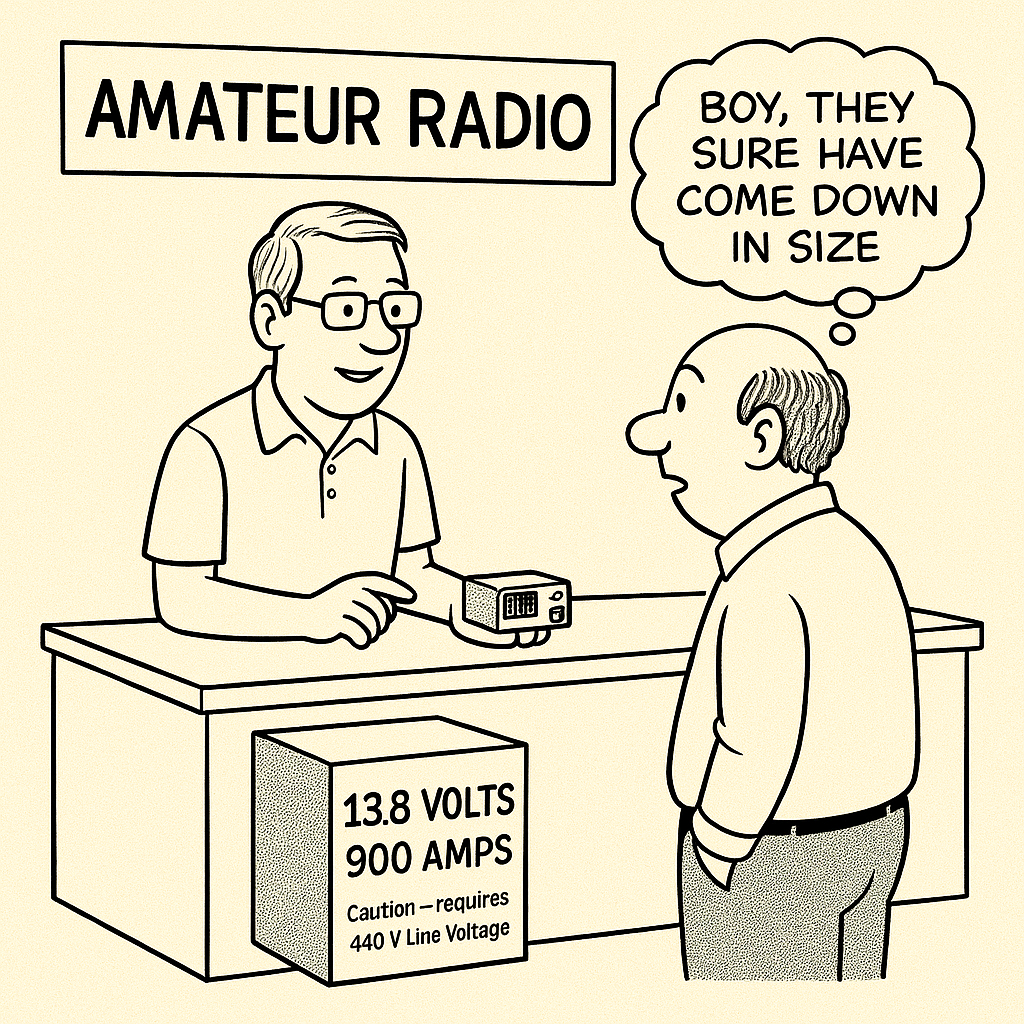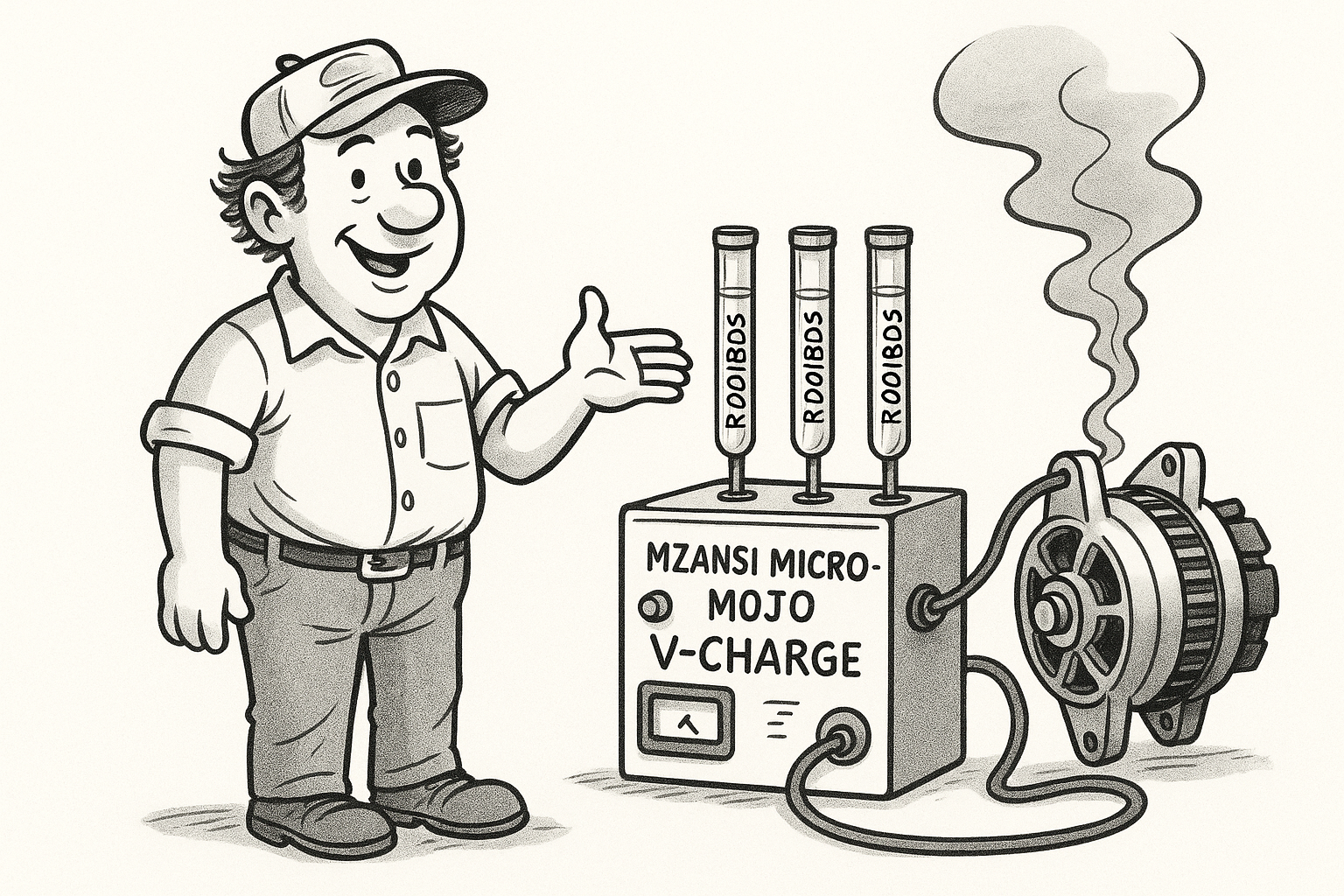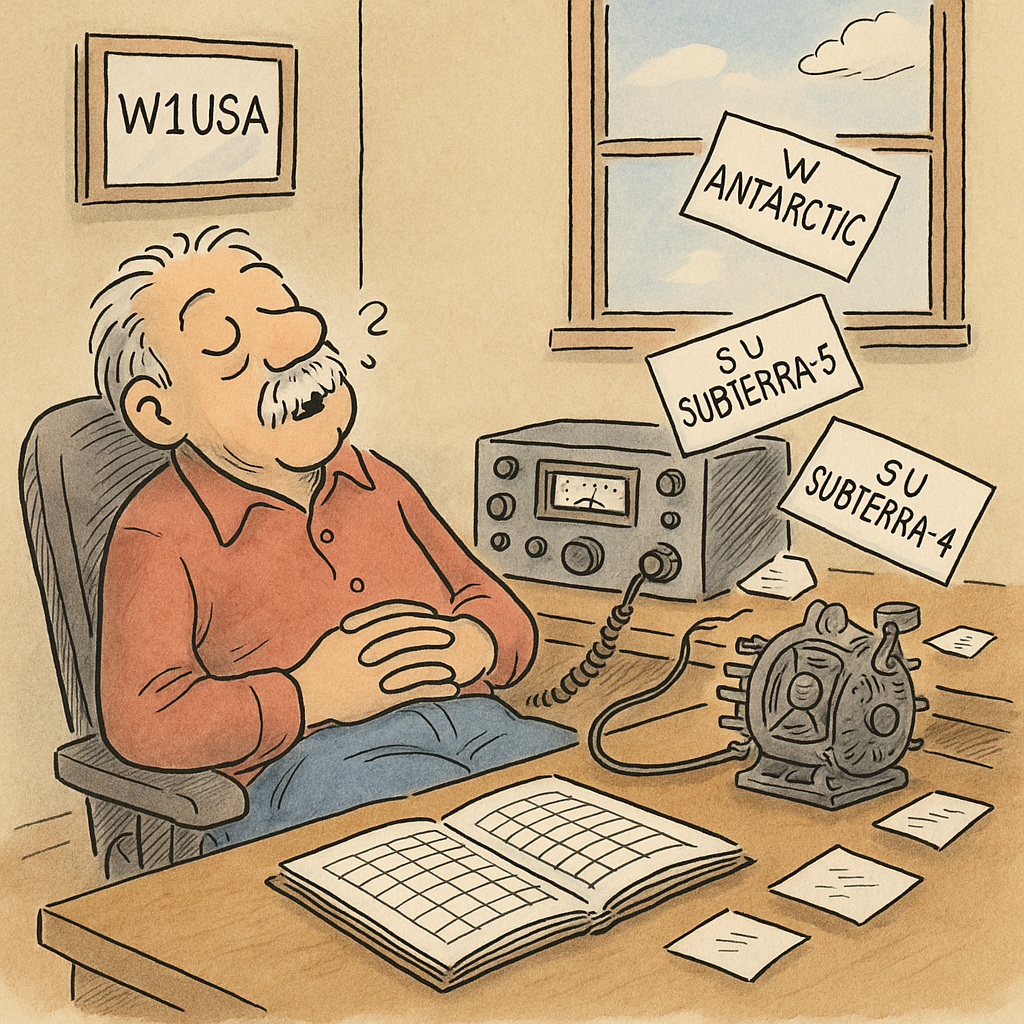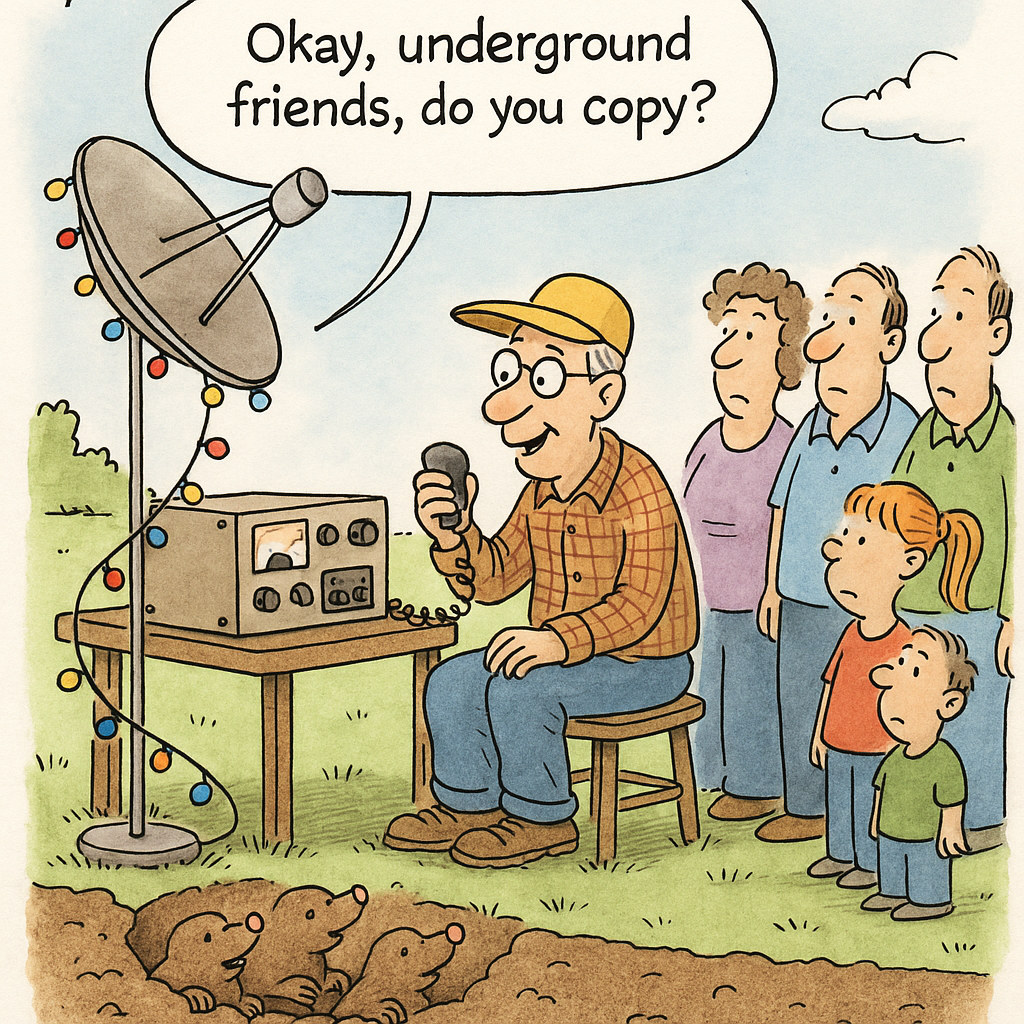COMING IN LIGHT: Why Today’s Ham Radios Are So Small You Might Inhale One
by NN4Y, still grounded
If you’ve opened the latest catalog from GiggleTech, you may have noticed something odd in the specs for their new Model 3.965 MineField HF/VHF/UHF/WiFi/ESP/NapMode transceiver:
Dimensions: 2.6 cm × 1.8 cm × “oh no, I dropped it”
Weight: 1.1 grams (including anti-static sneeze shield)
Power Supply: 13.8V @ 900 Amps (requires cryogenically pre-chilled vapor conduit)
Finals: Twin-core Star-Ray Spitters with auto-phase aurora modulation
Ladies and gentlemen… welcome to the helium capacitor era.
🎈 Gone Are the Days of Heavy Iron
We used to haul boat anchors—Heathkits the size of lawnmowers, Swan rigs you needed a winch to align, and Collins gear that came with its own health insurance rider. But thanks to helium dielectric miniaturization, the average capacitor now floats in midair, refuses to stay where it’s soldered, and requires its own netting. They call them “anti-gravity caps.” We call them ‘floaters.’
🔥 Hydrogen Rectifiers: Hot, Touchy, and Ready to Arc
Today’s rigs no longer rectify AC into DC with boring old silicon. No sir. They use hydrogen rectifiers, which provide ultra-efficient quantum backflow conduction… unless exposed to air, vibration, temperature change, direct light, or suspicion.
One operator in rural Kentucky tried to check into the net while cooking beans. His hydrogen rectifier pulsed once, ionized his microwave, and rendered his poodle bilingual.
🌟 Output Stage? Say Hello to the Star-Ray Spitter™
Replacing the transistor finals is the Star-Ray Spitter, a bio-directional photonic output array capable of radiating 2.4 gigawatts through a clothesline. It uses reverse-salted plasmon resonance to “slip” signal across layers of folded time.
Pros:
- Works on all known bands
- Occasionally receives future QSOs
Cons:
- Blew a hole in Steve’s shed
- Interferes with birds
🔋 Power Supply Advances: Down in Size, Up in Danger
While the radios are now pocket-sized, they require a power source roughly the size of a standard U-Haul trailer. The latest models run on stacked carbon-argon flux trays cooled by algorithmic vapor siphons. One unit was tested at 13.8 volts and 900 amps with excellent results—until the 440V line tripped a city block.
The manufacturer now recommends grounding your shack through the moon.
📦 Packaging & Field Deployment
You can now order an entire 1,200-watt base station rig, antenna tuner, amplifier, and satellite uplink pre-installed in a key fob. Available colors include obsidian, brushed nickel, and “NN4Y Centennial Pewter.”
Each kit ships in a 9V battery blister pack. Batteries not included. Touching the wrong end voids your insurance.
🧠 Coming Soon: Brain-Wave Keying
One prototype uses cranial input pads to transmit Morse directly from your thoughts. It requires 12 AA batteries and emotional regulation training. Early testers accidentally sent entire therapy sessions in CW.
The system is called “MindKey” and is being beta tested by NØONE (Buzz Kill), who now mostly transmits bitter regrets and interrupted dinner conversations.
FINAL THOUGHT
If you’re nostalgic for warm tubes and drifting VFOs, don’t worry: GiggleTech is also releasing a “Retro Drift Plug-In” that adds random frequency drift and the scent of old varnish to any SDR. Optional settings include “Old Boat Anchor,” “K2 with Sunspots,” and “That One Guy’s Yaesu.”
But until then, be careful when handling your new rig. It might be mistaken for a peanut, or worse… swallowed during a net check-in.
Stay safe, stay small, and always ground through Pluto when possible.







